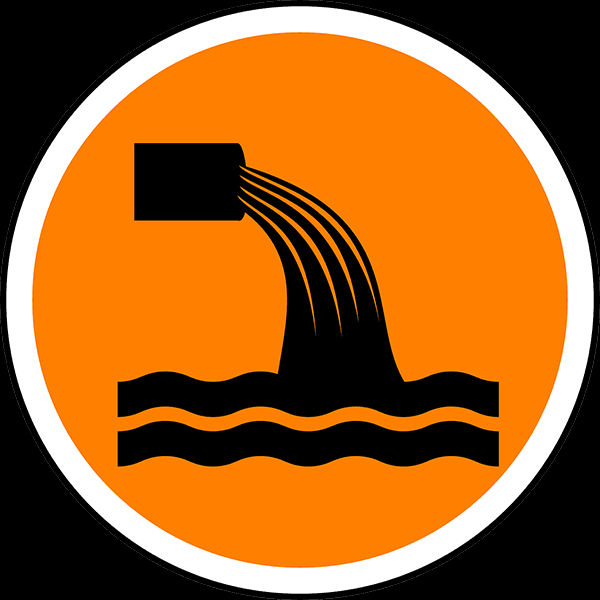Our Reclaim Waste PDFs
Our Reclaim Waste PDFs
Blog Article
The 25-Second Trick For Reclaim Waste
Table of ContentsFascination About Reclaim WasteReclaim Waste Can Be Fun For AnyoneExcitement About Reclaim WasteReclaim Waste for BeginnersIndicators on Reclaim Waste You Should Know
Residential sewage waste refers to the waste and products from a household septic tank. The appropriate monitoring and disposal of domestic sewage waste require fluid waste to be moved to a sewage therapy plant where the correct approaches and equipment are applied to cleanse and dispose of waste.
Business waste commonly includes possible dangers, such as combustible materials or a combination of fluid and solid waste items, and requires a much more innovative and detailed disposal process. The disposal of commercial waste generally entails the filtration of waste before transportation to make sure safe and correct disposal. Hazardous waste is developed from byproducts and drainage of commercial processes and manufacturing.
This type of waste can not use the exact same sewer monitoring transport or processes as septic or commercial liquids. The hazardous waste administration procedure requires the examination and testing of fluid waste prior to it undertakes the disposal process (liquid waste removal). Drainage waste is the fluid waste that originates from drainage and excess stormwater in extremely booming areas or cities
Drainage waste can create contamination and flooding otherwise managed correctly. Find out more regarding sewage system cleaning and waste management. Ensuring proper waste management can protect against catastrophes and lower ecological damage. Both people in domestic settings and specialists in business or production markets can profit from comprehending the procedures and laws of liquid waste management.
All About Reclaim Waste
Contact PROS Solutions today to discover our waste administration and disposal services and the appropriate methods to look after the liquid waste you produce.
(http://tupalo.com/en/users/7813759)Do you understand what happens to your water when you draw the plug, flush the bathroom or drain pipes the washing machine? No? Well, it's worth knowing. This supposed 'wastewater' is not only a vital resource yet, after therapy, will certainly be launched to our land, rivers or the ocean. Used water from commodes, showers, baths, kitchen sinks, laundries and commercial processes is referred to as wastewater.

water used to cool down machinery or tidy plant and equipment). Stormwater, a kind of wastewater, is overflow that moves from agricultural and metropolitan locations such as roof coverings, parks, yards, roads, paths and gutters right into stormwater drains pipes, after rainfall. Stormwater streams neglected straight to local creeks or rivers, at some point getting to the ocean.
Some Ideas on Reclaim Waste You Need To Know
In Queensland, a lot of wastewater is dealt with at sewer treatment plants. Wastewater is carried from domestic or commercial sites with a system of sewers and pump stations, known as sewage reticulation, to a sewer therapy plant.
The Department of Natural Resources recommends city governments about handling, operating and keeping sewage systems and therapy plants. In unsewered locations, neighborhood federal governments may need homeowners to install private or home sewage therapy systems to treat domestic wastewater from bathrooms, cooking areas, shower rooms and washings. The Department of Natural Resources authorises making use of home systems when they are shown to be reliable.
Most stormwater gets no treatment. In some brand-new neighborhoods, therapy of some stormwater to remove clutter, sand and crushed rock has actually begun utilizing gross pollutant catches. Wastewater treatment takes place in four stages: Eliminates solid issue. Larger solids, such as plastics and other items incorrectly discharged to drains, are removed when wastewater is passed via screens.
Utilizes tiny living microorganisms knows as micro-organisms to damage down and eliminate staying liquified wastes and great bits. Micro-organisms and wastes are incorporated in the sludge.
Not known Factual Statements About Reclaim Waste
Nutrient elimination is not readily available at all sewage therapy plants since it calls for expensive specialised devices. It is coming to be a lot more common in Queensland. Clear fluid effluent produced after treatment may still contain disease-causing micro-organisms. If this effluent is launched right into rivers such as rivers or the sea, the micro-organisms will at some point die out.

This usually indicates wastewater needs to be treated or pollutants gotten rid of before it can be discharged to rivers. Many wastewater flows right into the sewerage system. Under the Act, city governments provide approvals and permits for environmentally appropriate tasks (ERAs) entailing wastewater releases that may have a neighborhood influence. The department carries out authorizations and permits to ERAs involving wastewater launches that might have a local or statewide impact.
Not known Details About Reclaim Waste
Or else, samples are taken for laboratory evaluation. Typically numerous tests are required to develop the levels go now of each of the different contaminants such as oils, hefty metals and chemicals in water. Tracking gives factual info concerning water quality and can verify that permit conditions are being fulfilled. The info acquired through monitoring gives the basis for making water quality decisions.
Report this page